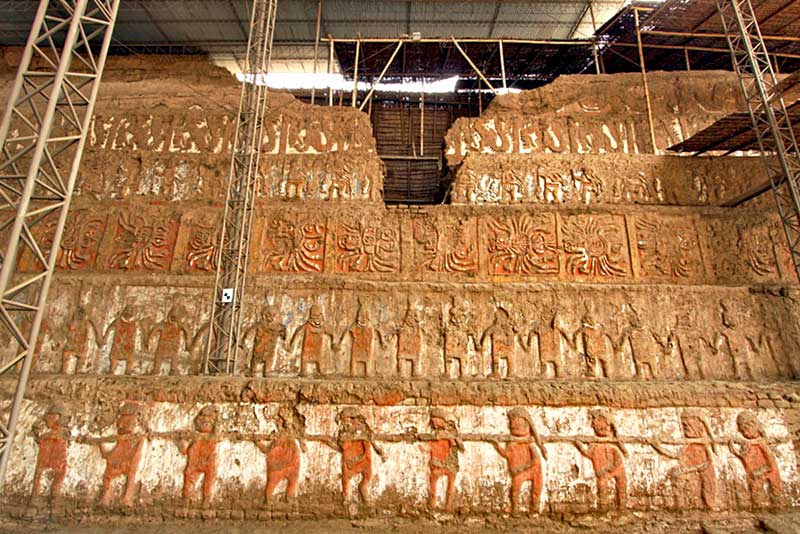On the arid plains of the Moche Valley near Trujillo, Peru, the Huaca de la Luna (Temple of the Moon) rises from the earth, a monumental adobe complex built by the Moche civilization between 100 and 800 CE. More than just a pyramid, it was the sacred heart of a ceremonial capital, standing in deliberate contrast to its companion, the Huaca del Sol. Together, they formed the political and spiritual core of one of the most sophisticated cultures to flourish on the pre-Inca Peruvian coast.

Its power, however, is not in its scale alone, but in the stories etched upon its walls. The temple’s adobe façades are covered with intricate, polychrome friezes, painted in vivid, enduring shades of red, black, and white. These panels form a vast, open-air gallery depicting a pantheon of deities, processions of warriors, and elaborate ritual scenes. Dominating many of these narratives is the recurring, fearsome visage of Ai Apaec, the Decapitator God. This fanged deity, a central figure in Moche cosmology, embodies the dual forces of fertility and warfare, creation and sacrifice.

Despite centuries of exposure to the harsh coastal elements, earthquakes, and the slow erosion of time, these murals retain a stunning clarity. The sharp lines and bold colors have survived, protected in part by the Moche practice of ritually building new layers over old, effectively entombing and preserving each generation’s sacred art. This architectural practice has gifted modern humanity with a remarkably detailed window into the Moche’s symbolic world.

To stand before these walls is to stand inside a living narrative where beauty and ritual brutality are inextricably linked. The layered imagery tells a complex story of devotion, divine power, and the eternal cycle of life and death that governed the Moche universe. The civilization itself has long faded, its people and language lost to time, but here at Huaca de la Luna, their voices, rendered in clay and color, continue to speak with profound eloquence across the millennia.